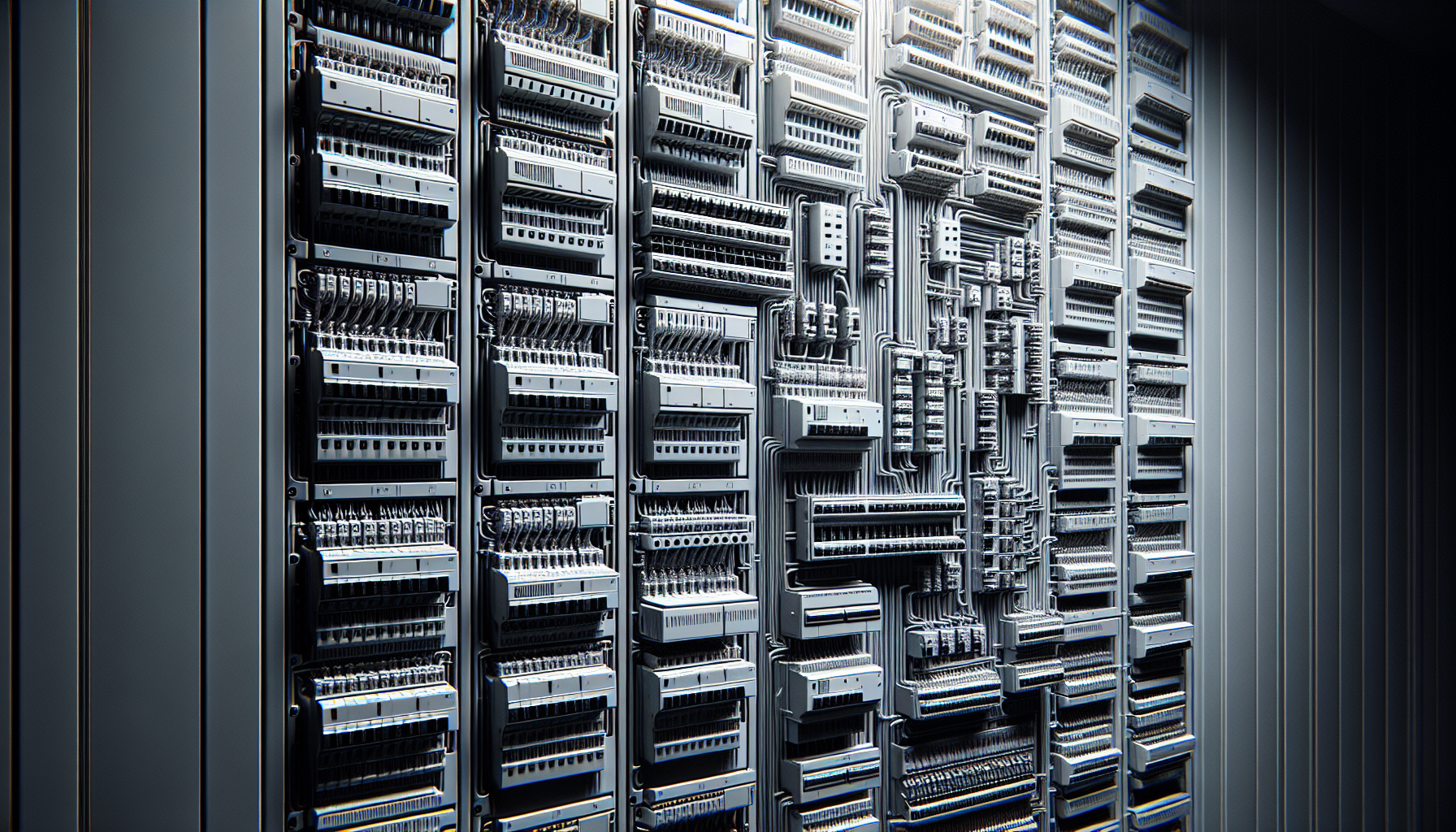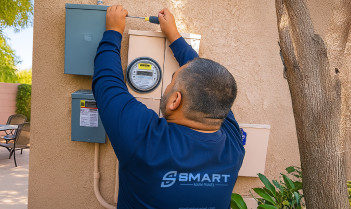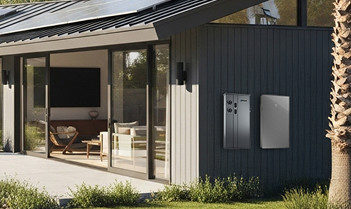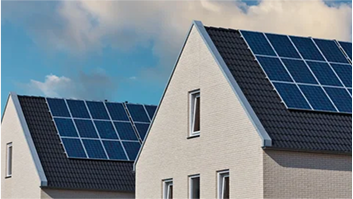
Date
How Do I Know What Type Of Electrical Panel I Have?
Have you ever looked at your electrical panel and wondered what type it is? Whether you’re a homeowner or a renter, it’s important to know what type of electrical panel you have in order to ensure its safety and efficiency. In this article, we will explore the various types of electrical panels and provide you with some tips on how to identify the one you have. So, join us as we unravel the mystery behind your electrical panel and empower you with the knowledge you need for a safe and secure electrical system.

Why It’s Important to Know Your Electrical Panel Type
Understanding the type of electrical panel you have in your home is crucial for several reasons. First and foremost, knowing the type of panel allows you to better understand how your electrical system works and how to safely interact with it. It also helps you determine if your panel is outdated or faulty, which can pose potential safety hazards. Additionally, knowing your electrical panel type is essential when it comes to maintenance, repairs, and upgrades. By having this knowledge, you can ensure that your electrical system is functioning properly and can handle your household’s energy demands.
Understanding Electrical Panels
Definition of an Electrical Panel
An electrical panel, also known as a breaker box or a distribution board, is a crucial component of your home’s electrical system. It is responsible for receiving electricity from the utility company and distributing it to various circuits throughout your house. The panel acts as a central hub where circuit breakers or fuses are housed to control and protect the flow of electricity.
Main Components of an Electrical Panel
Electrical panels consist of several key components. The main parts include:
- Main Service Disconnect: This switch completely shuts off power to your entire home. It is typically the largest breaker in the panel and is used during emergencies or maintenance work.
- Circuit Breakers or Fuses: These devices control the flow of electricity to individual circuits. Circuit breakers are more common in modern panels, while older panels may still use fuses.
- Bus Bars: Bus bars are metal strips that conduct electricity and distribute it to the various circuit breakers or fuses.
- Neutral and Ground Bars: The neutral bar is where the neutral wire from the utility company and neutral wires from circuits are connected. The ground bar is where ground wires from circuits and other grounding components are connected.
Different Types of Electrical Panels
There are various types of electrical panels commonly found in residential properties. Some of the most common types include:
- Split-Bus Electrical Panels: Split-bus panels were commonly used in older homes built prior to the 1960s. They feature multiple disconnect switches, allowing homeowners to shut off power to different sections of the house independently.
- Fuse Box: Fuse boxes were prevalent in homes built before the 1960s. They use fuses instead of circuit breakers to protect circuits from overloading. Fuses need to be replaced when they blow.
- Circuit Breaker Panel: Circuit breaker panels became the standard in the 1960s. They use circuit breakers instead of fuses and provide greater convenience and safety compared to fuse boxes.
- Main Lug Panel: Main lug panels do not have a main disconnect switch and are typically used as subpanels in areas like garages or outbuildings.
- Subpanel: A subpanel is an additional panel that is connected to the main panel. It is used to expand the number of available circuits in a property.
- Ground Fault Circuit Interrupter (GFCI) Panel: GFCI panels offer extra protection against electrical shocks and are commonly used in areas where water is present, such as kitchens and bathrooms.
- Arc Fault Circuit Interrupter (AFCI) Panel: AFCI panels are designed to detect and mitigate the risk of electrical fires caused by arcing faults in the circuit wiring.
Visual Inspection of Your Electrical Panel
Locating Your Electrical Panel
To begin your visual inspection, you first need to locate your electrical panel. In most homes, the panel is typically installed in a utility room, basement, garage, or on an exterior wall. It is important to have clear access to the panel and ensure that it is not obstructed by any objects.
Identifying the Manufacturer
Once you have located your electrical panel, take note of the manufacturer’s name. The manufacturer’s name is usually displayed on the panel’s cover or label. Knowing the manufacturer is useful as it can provide insight into the age and quality of the panel.
Determining the Age of Your Electrical Panel
Determining the age of your electrical panel is essential, as older panels are more prone to safety issues and may not meet current electrical code requirements. Look for a manufacturer’s label or date stamp on the inside or outside of the panel to determine its age. If you are unsure about the age, consulting an electrician can help you assess the condition and safety of your panel.
Checking for Labels or Panel Markings
Inspect your electrical panel for any labels or markings that indicate its type or features. These labels can provide valuable information about the panel and its capabilities. Common labels include “Circuit Breaker Panel,” “Fuse Box,” or specific panel model names.

Consulting the Homeowner’s Manual or Documentation
Locating the Homeowner’s Manual
Many home electrical panels come with a homeowner’s manual or documentation provided by the manufacturer. This manual contains important information about the panel’s specifications, maintenance requirements, and safety guidelines. Locate the manual and keep it accessible for reference.
Contacting the Builder or Previous Owner
If you cannot find the homeowner’s manual, you may try contacting the builder or previous owner of the property. They may have valuable information about the electrical panel type and its history. They might also be able to provide insights into any previous electrical repairs or upgrades.
Checking for Panel Model or Serial Numbers
Inspect the panel itself for any visible model or serial numbers. These numbers can help you identify the specific make and model of your electrical panel. With this information, you can conduct further research online or contact the manufacturer for specific details about your panel.
Seeking Professional Assistance
Contacting an Electrician
If you are uncertain about the type or condition of your electrical panel, it is always recommended to seek professional assistance. An electrician can inspect your panel, provide valuable insights, and offer advice on any necessary repairs or replacements. They have the knowledge and expertise to ensure that your electrical system is safe and up to code.
Scheduling an Electrical Inspection
An electrical inspection by a licensed electrician is a comprehensive way to assess the condition of your entire electrical system, including your panel. During the inspection, the electrician will check for any potential safety hazards, outdated components, or signs of wear and tear. They will also provide recommendations on necessary repairs, upgrades, or replacements to ensure your home’s electrical system is safe and efficient.
Safety Considerations
Knowing Your Electrical Panel Type for Maintenance or Repairs
Being aware of your electrical panel type is essential when it comes to maintenance or repairs. Different panel types may have specific requirements or limitations. By knowing the type of panel you have, you can ensure that any work done on your electrical system is done correctly and safely.
Determining the Capacity of Your Panel
Another important safety consideration is understanding the electrical capacity of your panel. Each panel has a specific amperage rating that determines how much electrical load it can handle. Overloading the panel can lead to overheating, circuit tripping, or even electrical fires. If you are planning to add new appliances or expand your property, it is crucial to ensure that your panel can accommodate the increased electrical demand.
Replacing or Upgrading an Outdated or Faulty Panel
Outdated electrical panels, such as fuse boxes or split-bus panels, may pose safety risks due to their age, limited capacity, or lack of modern safety features. Faulty panels with signs of wear and tear, damaged components, or recurring issues should also be replaced or upgraded. Upgrading to a newer panel that meets current electrical codes will ensure the safety and reliability of your home’s electrical system.
Common Types of Electrical Panels
Split-Bus Electrical Panels
Split-bus electrical panels were commonly installed in homes built prior to the 1960s. They feature multiple disconnect switches, allowing homeowners to shut off power to different sections of the house independently. However, these panels are considered outdated and potentially unsafe due to the lack of a main disconnect switch and limited space for new circuits.
Fuse Box
Fuse boxes were prevalent in homes built before the 1960s. They use fuses instead of circuit breakers to protect circuits from overloading. Fuses are designed to blow and break the circuit when there is an electrical overload. While fuse boxes can still function properly, they require manual replacement of blown fuses and are less convenient than modern circuit breaker panels.
Circuit Breaker Panel
Circuit breaker panels became the standard in the 1960s and are widely used in modern homes. They use circuit breakers instead of fuses to protect circuits. Circuit breakers can be easily reset after tripping, making them more convenient and safer than fuses. Circuit breaker panels come in various sizes and configurations to accommodate different electrical loads.
Main Lug Panel
Main lug panels, also known as subpanels, do not have a main disconnect switch. They are typically used in areas like garages or outbuildings to provide additional circuits and electrical distribution. Main lug panels receive power from the main electrical panel and are not designed to be the primary distribution point for the entire property.
Subpanel
A subpanel is an additional panel that is connected to the main electrical panel. It is used to expand the number of available circuits in a property. Subpanels are commonly installed when the main panel does not have enough room for new circuits or when additional circuits are needed in specific areas of the property.
Ground Fault Circuit Interrupter (GFCI) Panel
GFCI panels offer extra protection against electrical shocks and are commonly used in areas where water is present, such as kitchens and bathrooms. These panels include built-in GFCI circuit breakers that quickly detect ground faults and immediately disrupt the electrical current to prevent electrical shocks.
Arc Fault Circuit Interrupter (AFCI) Panel
AFCI panels are designed to detect and mitigate the risk of electrical fires caused by arcing faults in the circuit wiring. They include special AFCI circuit breakers that monitor the electrical current for any abnormal arcing that can lead to fires. AFCI panels provide an additional layer of safety to protect your property and its occupants.
Signs of Outdated or Problematic Electrical Panels
Frequent Tripping or Blown Fuses
If you experience frequent tripping of circuit breakers or blown fuses, it could indicate that your electrical panel is overloaded or faulty. Overloaded circuits can be a sign that your electrical panel cannot handle the energy demand of your household.
Buzzing Sounds or Odors
Unusual buzzing sounds coming from the electrical panel or persistent odors of burning could indicate internal issues within the panel. These signs should not be ignored, as they can potentially lead to electrical malfunctions or fires.
Warm or Hot Electrical Panel
An electrical panel that feels warm or hot to the touch could be a sign of excessive electrical load or poor connections within the panel. Excessive heat can cause damage to the panel and increase the risk of a fire.
Corrosion or Rust
Visible signs of corrosion or rust on the electrical panel or its components could indicate moisture issues or poor panel condition. Corrosion can compromise the integrity of the panel, leading to electrical malfunctions or safety hazards.
Inability to Meet Modern Energy Demand
Outdated electrical panels, such as fuse boxes or split-bus panels, may not have the capacity to meet the modern energy demands of households. If you frequently experience power outages, circuit overloads, or appliances not functioning properly, it may be a sign that your electrical panel needs to be upgraded.
Panel Recalls
Occasionally, electrical panel manufacturers issue recalls due to safety concerns or defects. It is important to stay informed about any recalls relevant to your panel type. Checking the manufacturer’s website or contacting them directly can help you determine if your panel is affected and if any corrective actions are necessary.
When to Consider Upgrading Your Electrical Panel
Adding New Appliances or Electronics
If you are planning to add new appliances, electronic devices, or major electrical loads to your home, it is vital to ensure that your electrical panel can handle the increased energy demand. Upgrading to a higher-capacity panel will prevent overloading and potential safety issues.
Renovating or Expanding Your Property
During renovations or property expansions, it is an opportune time to assess the adequacy and safety of your electrical panel. Adding new rooms or increasing the square footage of your property may require upgrading your panel to meet the electrical demand of the updated space.
Frequent Circuit Overloads
If you frequently experience circuit breakers tripping or blown fuses, it may be a sign that your electrical panel is overloaded. Upgrading to a higher-capacity panel will ensure that your circuits can handle the energy demand of your household without interruptions or safety risks.
Non-Compliance with Electrical Codes
If your electrical panel does not meet current electrical codes, it may pose safety hazards and could result in non-compliance during inspections or when selling your property. Upgrading to a panel that meets the latest codes will ensure the safety and marketability of your home.
Conclusion
Knowing the type of electrical panel you have in your home is essential for maintaining a safe and reliable electrical system. By understanding the components and different types of panels, you can identify potential safety hazards, ensure proper maintenance and repairs, and make informed decisions regarding upgrades or replacements. If you are uncertain about your panel’s type or condition, it is advisable to consult with a professional electrician who can provide expert guidance and ensure the safety of your electrical system. Remember, keeping your electrical panel up to date and in good condition is a vital step in safeguarding your home and the well-being of its occupants.



